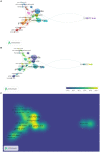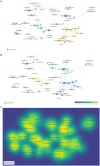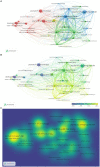Scientific collaborations and research trends in Parent-Child Interaction Therapy: a bibliometric analysis
- PMID: 37251036
- PMCID: PMC10213549
- DOI: 10.3389/fpsyg.2023.1167937
Scientific collaborations and research trends in Parent-Child Interaction Therapy: a bibliometric analysis
Abstract
Parent-child interaction therapy (PCIT) is considered to be an effective intervention for children aged 2-7 years with conduct problems. PCIT research has been conducted for approximately 50 years; however, an analysis of general research patterns has not been published. In this context, the present study outlines a bibliometric analysis of scientific collaborations, prevalence across locations on the basis of countries and organizations, leading researchers, and trends within PCIT research. Findings demonstrate that PCIT is an area in which international scientific collaborations are intense and current, and collaborations continue to be formed around the world. Additionally, results indicate that dissemination of intercultural PCIT adaptations are continuous.
Keywords: PCIT; bibliometric analysis; parent–child interaction therapy; research trends; scientific collaborations.
Copyright © 2023 Ulaş, Seçer, Victory and McNeil.
Conflict of interest statement
The authors declare that the research was conducted in the absence of any commercial or financial relationships that could be construed as a potential conflict of interest.
Figures










Similar articles
-
Extending parent-child interaction therapy for early childhood internalizing problems: new advances for an overlooked population.Clin Child Fam Psychol Rev. 2014 Dec;17(4):340-56. doi: 10.1007/s10567-014-0172-4. Clin Child Fam Psychol Rev. 2014. PMID: 25212716 Free PMC article. Review.
-
Parent-Child Interaction Therapy: current perspectives.Psychol Res Behav Manag. 2017 Jul 20;10:239-256. doi: 10.2147/PRBM.S91200. eCollection 2017. Psychol Res Behav Manag. 2017. PMID: 28790873 Free PMC article. Review.
-
Change trajectories for parent-child interaction sequences during parent-child interaction therapy for child physical abuse.Child Abuse Negl. 2009 Jul;33(7):461-70. doi: 10.1016/j.chiabu.2008.08.003. Epub 2009 Jul 5. Child Abuse Negl. 2009. PMID: 19581001
-
Parent-Child Interaction Therapy: A Meta-analysis.Pediatrics. 2017 Sep;140(3):e20170352. doi: 10.1542/peds.2017-0352. Pediatrics. 2017. PMID: 28860132 Review.
-
Implementation of Virtual Reality to Parent-Child Interaction Therapy for Enhancement of Positive Parenting Skills: Study Protocol for Single-Case Experimental Design With Multiple Baselines.JMIR Res Protoc. 2022 May 20;11(5):e34120. doi: 10.2196/34120. JMIR Res Protoc. 2022. PMID: 35594138 Free PMC article.
References
-
- Agazzi H., Knap K., Kimonis E. R. (2020). Parent–child interaction therapy-callous unemotional adaptation for a preschool boy with conduct problems. Clin. Case Stud. 19, 370–385. doi: 10.1177/1534650120950524, - DOI
-
- Agazzi H., Soca Lozano S., Hernandez M. (2022). Low treatment fidelity as an indication to switch ınterventions: pivoting from child-parent psychotherapy to parent-child interaction therapy for early childhood trauma. Clin. Case Stud. 22, 192–208. doi: 10.1177/15346501221124980 - DOI
-
- Agazzi H., Tan R., Tan S. Y. (2013). A case study of parent–child interaction therapy for the treatment of autism spectrum disorder. Clin. Case Stud. 12, 428–442. doi: 10.1177/1534650113500067 - DOI
Publication types
LinkOut - more resources
Full Text Sources

